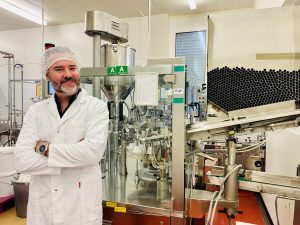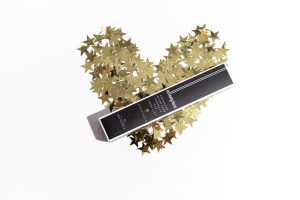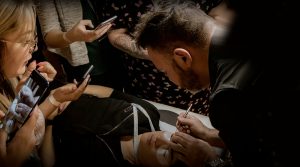THE EYELASH INDUSTRY HAS GROWN PHENOMENALLY IN THE LAST 20 YEARS. OVER TIME, THERE HAVE BEEN MANY ADVANCES IN THE TECHNOLOGY TO STIMULATE HAIR GROWTH AND CONDITION.
Many clients ask me about growth serums for eyelashes, or technically in most cases they should be called “eyelash enhancement serums” and these have been extremely popular. When producing these serums as a brand owner I have to be careful with the way we market certain claims, because using the term “makes your eyelashes longer” and “makes lashes longer or thicker because it activates the hair follicle” is a claim that the product is changing the physical structure and function of an eyelash. To make this claim in the United States the product should be classed as an OTC (over the counter) drug. Similar rules apply in Australia, the TGA and NCCTG cosmetics claims guidelines state that if your product is a cosmetic it should not say stimulates hair follicles (growth) or replaces thinning hair. You can however say “helps make hair look thicker and longer” or “promotes lustre” essentially using more descriptive cosmetic claims.
Many products that are deemed as cosmetic products which contain peptides, vitamins, and conditioning agents do have great benefits, and consumers have had success with certain formulas that make the lashes appear more voluminous and that have increased density. The description of the product however should say something along the lines of conditioner or enhancer.
The other reality we have to accept as individuals is certain products that offer eyelash enhancing properties and that contain amino acids or peptides don’t always work on everyone. We are all different with our genetics and as a consumer, we have to be realistic and understand that just because we see peptides in the ingredients doesn’t guarantee anything as far as hair growth or long-term thickening is concerned. I have personally used Biotinoyl Tripeptide-1 and Myristoyl Pentapeptide 17 combined in serum with hydrolysed keratin and vitamins, generously on my lashes every single day for 8 weeks and up to that point it hadn’t worked at all as far as stimulating more density or length in my lashes and you’ll see many other reviews from people saying the same, yet these peptides and active ingredients have been in-vitro tested and clinically tested by the raw material suppliers that have had some results to say the contrary and that they do in fact work.
Clinical testing or trials is another term that consumers can be interested in and when it comes to many serums there have been vast clinical trials about the effectiveness of certain peptides on lash growth. It’s important that any consumer understands how clinical trials work and how the evaluation has been concluded. Always ask for the method of clinical trial and method of testing if you have any doubts, this will give you a clearer picture as to how they came to the conclusion, that the product does what it says it does.
Invitro testing is performed in a test tube under specific conditions in a laboratory and this is a completely different environment to what my natural eyelashes are in every day. A clinical trial is generally conducted by utilising the products in a real-world environment on a certain number of test subjects or models, these trials are then evaluated by experts and then self-evaluated by the users of the product. These clinical trials are usually conducted by the brand or the material supplier independently. From all the research I’ve seen with these kinds of invitro or clinical trials, there is always a fine print disclaimer in the product data material, saying that the results can’t be guaranteed and that’s because what works for one person, doesn’t necessarily mean it will work for another.

Let’s always remember results can vary due to how much was used in the application, how frequent the application, hormonal, genetic, or perhaps even the formula may not be effective. There are so many variables there and at the end of the day and you always need to try for yourself to see if it works for you or your clients, do extensive research, this way you can feel confident about any claims that are being made with the results. In the beauty industry, we want happy clients, I find discussing client expectations in the consultation session always helps to minimise issues that may arise later, being open and honest on how results can vary is the best policy from my experience.
Using a conditioning product on eyelashes and brows can certainly have benefits in my opinion, especially when performing lash or brow lift services as these treatments do tend to leave the hairs drier after the step 1 process. Similar to when you shampoo your hair, you condition it after and this changes the surface area leaving it hydrated, with more body, and allowing you to style easier.
Once you have had a lash lift or brow lamination service it is generally recommended to continue using serums daily to maximise the continued hydration into the hair, which really helps the styling element. Having an after-care range for your lash and brow clients is a win for you and your clients, there’s some return business for you, but there are real benefits for the client, so it’s something that you can genuinely feel good about offering in your salon. Keep in mind that to get maximum benefit in most cases they should be used regularly, if not daily. If you put a serum on with a peptide once every 4 or 6 weeks, then chances are you’re not going to see a real benefit, because putting a serum topically on eyelashes for such a short amount of exposure will dissipate quickly after the initial application. However, if I frequently apply a serum every day, then there is more of a chance of receiving benefits from the peptide or actives in the formula, although applying every day still may not guarantee that it will increase growth or volume in lashes, but it will most certainly keep them more hydrated and increase your chances of seeing results.

Let’s talk about increasing the volume of hair or lashes, when consumers hear the term volume, they generally expect lashes to be thicker. Most of us know if you put a conditioner on your hair or some volumizing powder it may give the surface area more volume because of the added substance, even putting water on my lashes will increase their volume by 15 – 20%! But how long does this volume last? That’s the important question to ask and understand with anything that says increases volume. If we put mascara on eyelashes that can increase volume by 50 – 100%, but it washes off when you remove the mascara. Anything that is going to have a “long-lasting” effect at increasing length or density of lashes would generally need to be something that is applied regularly on a daily or frequent basis. If I could apply a product once every four or six weeks that would increase my hair volume by 20 or 30% for a long period of time, every single hair restoration brand out there would have a product that did just that, and when it comes to re-growing hair, it’s a long road of incorporating a frequent routine in getting the actives to increase the size of the hair follicle combined with oral supplements, not just putting a serum topically on the hair itself once every few weeks.
I’ve consulted with many experienced hair restoration companies, scientists, and raw material suppliers on this topic because as a brand owner myself that sells lash serums it’s important that we give our clients the best information to meet our client’s expectations. Understanding and being able to explain claims is important, then you can feel confident when choosing the products that are right for you and your clients.

Written by Otto Mitter, multi-award-winning beauty educator, cosmetic chemist and keynote speaker, international judge for lash and brow competitions, and global brand owner for Elleebana.

